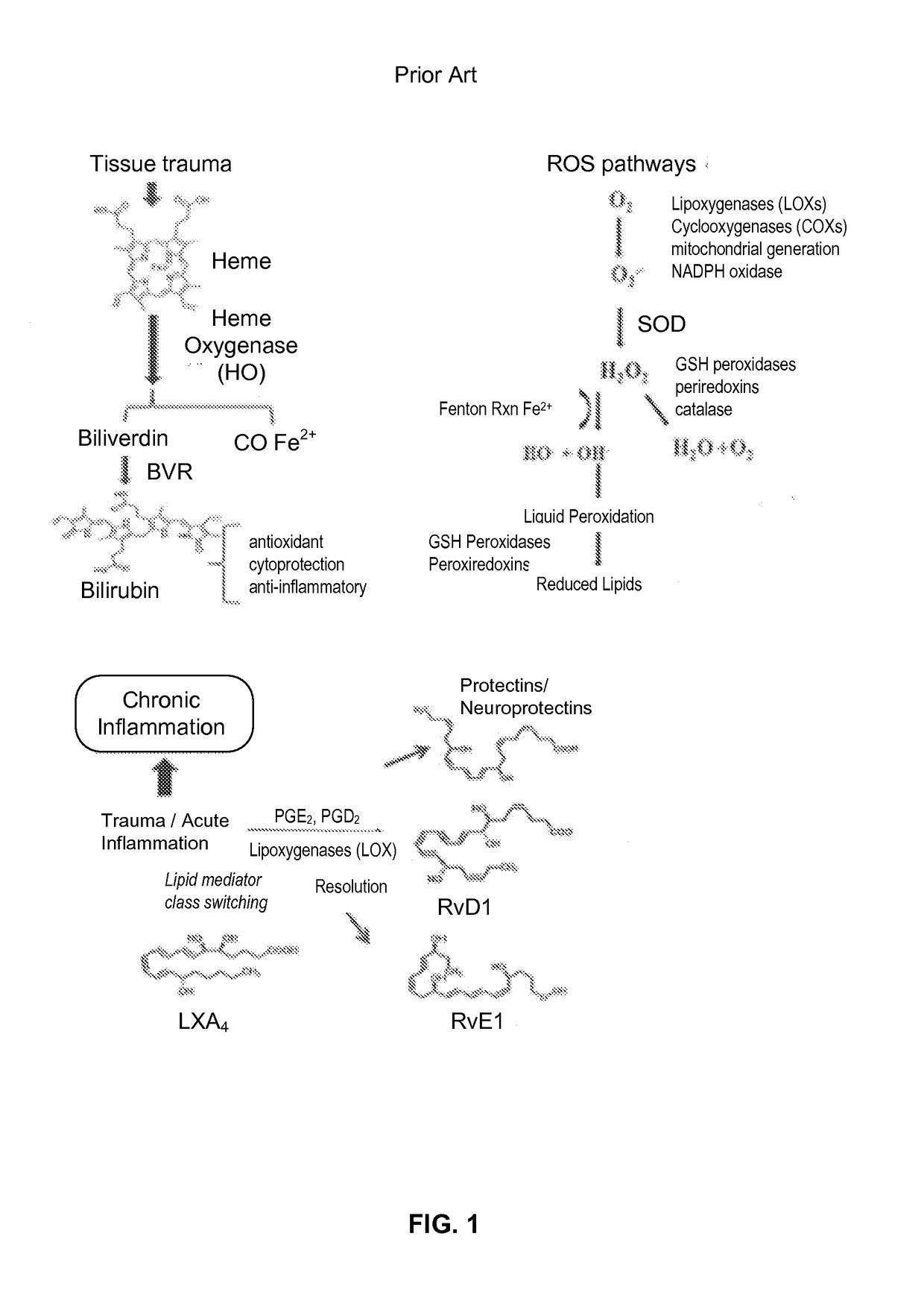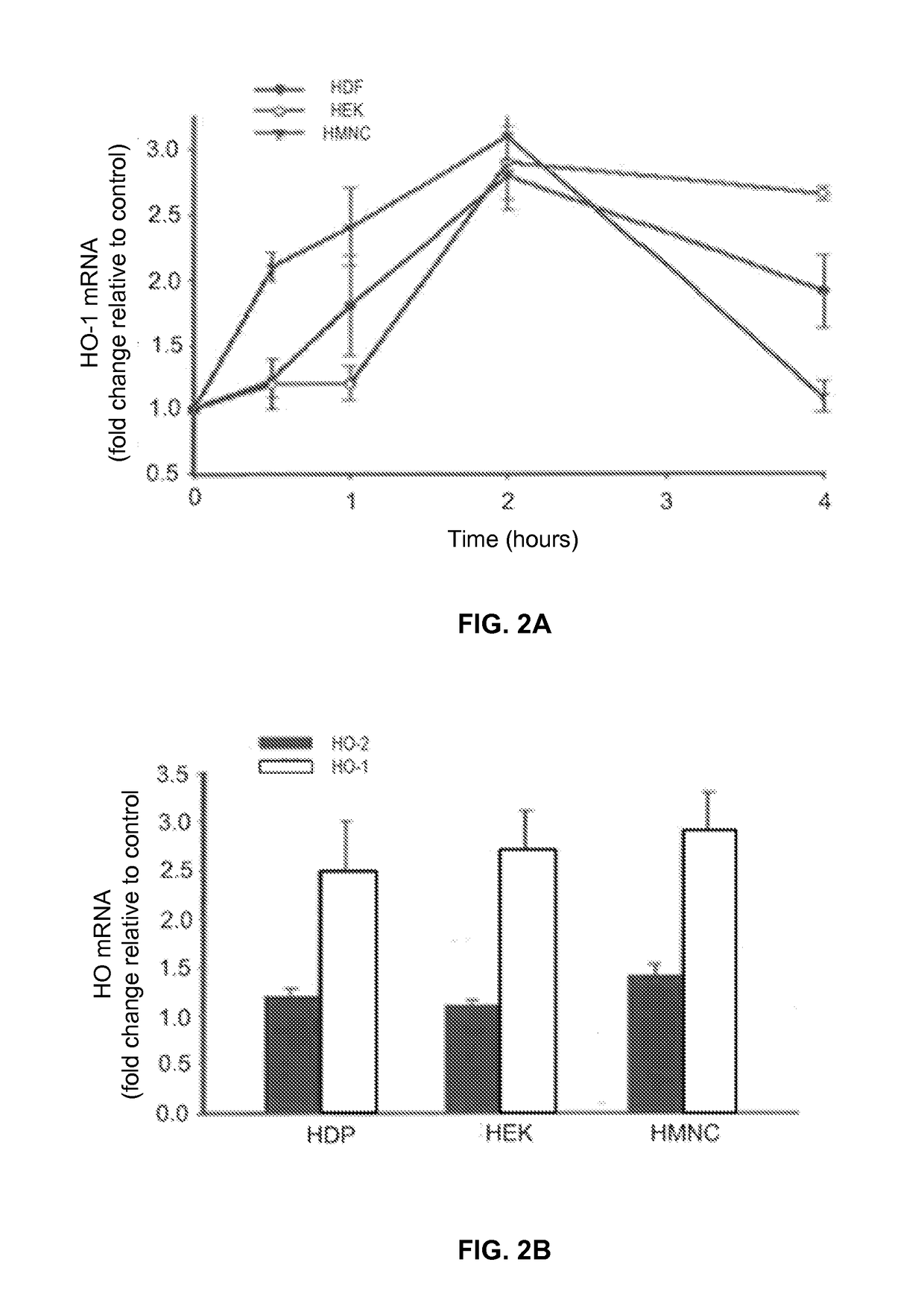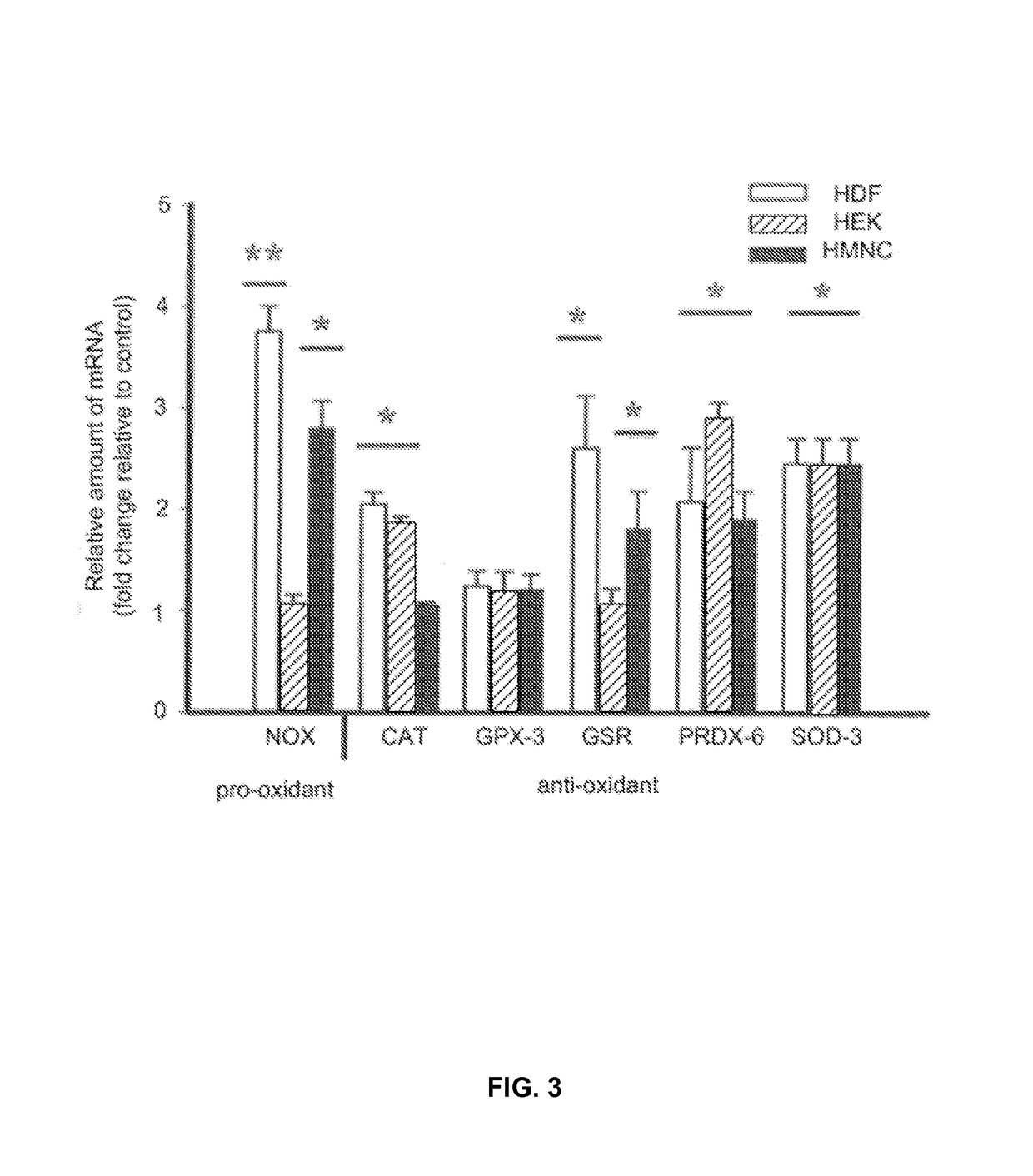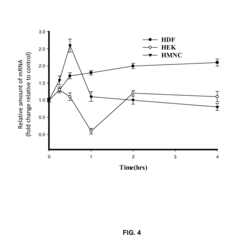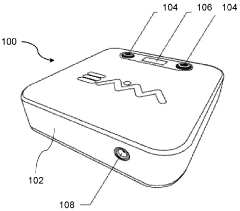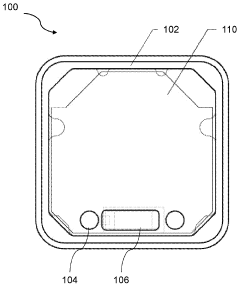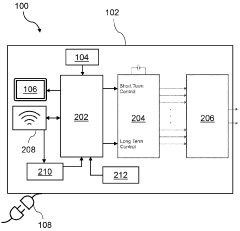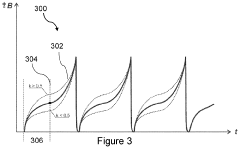Understanding the Electromagnetic Spectrum in PEMF Therapy Usage
AUG 11, 20259 MIN READ
Generate Your Research Report Instantly with AI Agent
Patsnap Eureka helps you evaluate technical feasibility & market potential.
PEMF Therapy Background
Pulsed Electromagnetic Field (PEMF) therapy has emerged as a promising non-invasive treatment modality in recent years. This therapeutic approach harnesses the power of electromagnetic fields to stimulate cellular repair and promote overall health. The concept of using electromagnetic fields for healing dates back to the mid-20th century, with early research focusing on bone healing and pain management.
PEMF therapy operates on the principle that all living cells possess an electrical charge, and external electromagnetic fields can influence cellular functions. By applying pulsed electromagnetic fields to the body, PEMF devices aim to restore or enhance the natural electromagnetic balance within cells, potentially leading to various health benefits.
The development of PEMF therapy has been closely tied to advancements in our understanding of bioelectromagnetics and cellular biology. Early studies in the 1950s and 1960s demonstrated the effects of electromagnetic fields on bone formation, laying the groundwork for future applications. As research progressed, scientists began to explore the potential of PEMF in treating a wider range of conditions, including soft tissue injuries, chronic pain, and even mental health disorders.
One of the key milestones in PEMF therapy's evolution was its FDA approval for treating non-union fractures in 1979. This recognition paved the way for broader acceptance and further research into its therapeutic potential. Subsequently, PEMF devices have been approved for various other applications, including post-operative pain and edema, as well as certain types of depression.
The technology behind PEMF therapy has also evolved significantly over the years. Early devices were often large, cumbersome, and limited in their application. Modern PEMF devices, however, range from portable, home-use units to more sophisticated clinical systems, offering a wide spectrum of frequencies and intensities to cater to different therapeutic needs.
As research in this field continues to expand, scientists are uncovering new potential applications for PEMF therapy. Recent studies have explored its efficacy in areas such as wound healing, neurological disorders, and even cancer treatment. While many of these applications are still in the experimental stages, they highlight the growing interest and potential of PEMF therapy in modern medicine.
Understanding the electromagnetic spectrum is crucial in the context of PEMF therapy. The therapy typically utilizes low-frequency electromagnetic fields, ranging from a few Hertz to several thousand Hertz. This spectrum is considered non-ionizing and is believed to be safe for biological systems when used appropriately. The specific frequencies and intensities used in PEMF therapy can vary depending on the intended therapeutic effect and the condition being treated.
PEMF therapy operates on the principle that all living cells possess an electrical charge, and external electromagnetic fields can influence cellular functions. By applying pulsed electromagnetic fields to the body, PEMF devices aim to restore or enhance the natural electromagnetic balance within cells, potentially leading to various health benefits.
The development of PEMF therapy has been closely tied to advancements in our understanding of bioelectromagnetics and cellular biology. Early studies in the 1950s and 1960s demonstrated the effects of electromagnetic fields on bone formation, laying the groundwork for future applications. As research progressed, scientists began to explore the potential of PEMF in treating a wider range of conditions, including soft tissue injuries, chronic pain, and even mental health disorders.
One of the key milestones in PEMF therapy's evolution was its FDA approval for treating non-union fractures in 1979. This recognition paved the way for broader acceptance and further research into its therapeutic potential. Subsequently, PEMF devices have been approved for various other applications, including post-operative pain and edema, as well as certain types of depression.
The technology behind PEMF therapy has also evolved significantly over the years. Early devices were often large, cumbersome, and limited in their application. Modern PEMF devices, however, range from portable, home-use units to more sophisticated clinical systems, offering a wide spectrum of frequencies and intensities to cater to different therapeutic needs.
As research in this field continues to expand, scientists are uncovering new potential applications for PEMF therapy. Recent studies have explored its efficacy in areas such as wound healing, neurological disorders, and even cancer treatment. While many of these applications are still in the experimental stages, they highlight the growing interest and potential of PEMF therapy in modern medicine.
Understanding the electromagnetic spectrum is crucial in the context of PEMF therapy. The therapy typically utilizes low-frequency electromagnetic fields, ranging from a few Hertz to several thousand Hertz. This spectrum is considered non-ionizing and is believed to be safe for biological systems when used appropriately. The specific frequencies and intensities used in PEMF therapy can vary depending on the intended therapeutic effect and the condition being treated.
Market Analysis
The PEMF (Pulsed Electromagnetic Field) therapy market has experienced significant growth in recent years, driven by increasing awareness of its potential health benefits and a growing demand for non-invasive treatment options. The global PEMF therapy devices market is expected to continue its upward trajectory, with a compound annual growth rate (CAGR) projected to be in the double digits over the next five years.
The market demand for PEMF therapy devices spans across various sectors, including healthcare facilities, sports medicine, and home-use applications. In the healthcare sector, PEMF therapy is gaining traction for its potential in pain management, bone healing, and post-operative recovery. Hospitals and rehabilitation centers are increasingly incorporating PEMF devices into their treatment protocols, contributing to market growth.
The sports medicine segment represents a particularly promising area for PEMF therapy. Professional athletes and sports teams are adopting PEMF devices for injury recovery and performance enhancement, driving demand in this sector. This trend is expected to trickle down to amateur athletes and fitness enthusiasts, further expanding the market.
The home-use segment is emerging as a key driver of market growth. As consumers become more health-conscious and seek non-pharmacological solutions for chronic conditions, the demand for portable and user-friendly PEMF devices for personal use is rising. This trend has been accelerated by the global shift towards home-based healthcare solutions, particularly in the wake of the COVID-19 pandemic.
Geographically, North America currently holds the largest market share in the PEMF therapy devices market, followed by Europe. This dominance is attributed to the high adoption rate of advanced medical technologies, favorable reimbursement policies, and a large patient population suffering from chronic pain and musculoskeletal disorders. However, the Asia-Pacific region is expected to witness the fastest growth in the coming years, driven by increasing healthcare expenditure, growing awareness about PEMF therapy, and the rising geriatric population in countries like China and Japan.
The market is characterized by the presence of both established medical device manufacturers and innovative startups. Key players are focusing on product development and technological advancements to gain a competitive edge. There is a growing emphasis on developing devices that offer precise control over electromagnetic field parameters, allowing for more targeted and effective treatments.
Despite the positive outlook, the PEMF therapy market faces challenges such as the need for more extensive clinical evidence to support its efficacy across various applications. Regulatory hurdles and varying approval processes across different regions also pose challenges to market growth. However, ongoing research and clinical trials are expected to address these concerns and potentially open up new application areas for PEMF therapy, further driving market expansion.
The market demand for PEMF therapy devices spans across various sectors, including healthcare facilities, sports medicine, and home-use applications. In the healthcare sector, PEMF therapy is gaining traction for its potential in pain management, bone healing, and post-operative recovery. Hospitals and rehabilitation centers are increasingly incorporating PEMF devices into their treatment protocols, contributing to market growth.
The sports medicine segment represents a particularly promising area for PEMF therapy. Professional athletes and sports teams are adopting PEMF devices for injury recovery and performance enhancement, driving demand in this sector. This trend is expected to trickle down to amateur athletes and fitness enthusiasts, further expanding the market.
The home-use segment is emerging as a key driver of market growth. As consumers become more health-conscious and seek non-pharmacological solutions for chronic conditions, the demand for portable and user-friendly PEMF devices for personal use is rising. This trend has been accelerated by the global shift towards home-based healthcare solutions, particularly in the wake of the COVID-19 pandemic.
Geographically, North America currently holds the largest market share in the PEMF therapy devices market, followed by Europe. This dominance is attributed to the high adoption rate of advanced medical technologies, favorable reimbursement policies, and a large patient population suffering from chronic pain and musculoskeletal disorders. However, the Asia-Pacific region is expected to witness the fastest growth in the coming years, driven by increasing healthcare expenditure, growing awareness about PEMF therapy, and the rising geriatric population in countries like China and Japan.
The market is characterized by the presence of both established medical device manufacturers and innovative startups. Key players are focusing on product development and technological advancements to gain a competitive edge. There is a growing emphasis on developing devices that offer precise control over electromagnetic field parameters, allowing for more targeted and effective treatments.
Despite the positive outlook, the PEMF therapy market faces challenges such as the need for more extensive clinical evidence to support its efficacy across various applications. Regulatory hurdles and varying approval processes across different regions also pose challenges to market growth. However, ongoing research and clinical trials are expected to address these concerns and potentially open up new application areas for PEMF therapy, further driving market expansion.
Technical Challenges
The current state of PEMF (Pulsed Electromagnetic Field) therapy technology faces several significant challenges that hinder its widespread adoption and efficacy. One primary obstacle is the lack of standardization in PEMF devices and treatment protocols. The wide variety of frequencies, intensities, and waveforms used in different PEMF devices makes it difficult to compare results across studies and establish consistent treatment guidelines.
Another major challenge is the limited understanding of the precise mechanisms by which PEMF therapy affects biological systems. While numerous studies have demonstrated positive effects on various health conditions, the underlying cellular and molecular processes are not fully elucidated. This gap in knowledge impedes the optimization of PEMF treatments and limits the ability to predict outcomes accurately.
The development of more targeted and personalized PEMF therapies is also hindered by the complexity of the electromagnetic spectrum and its interactions with living tissues. Different frequencies and intensities may have varying effects on different cell types and tissues, making it challenging to design optimal treatment protocols for specific conditions.
Furthermore, there is a need for more sophisticated and reliable measurement techniques to assess the electromagnetic fields generated by PEMF devices and their penetration into biological tissues. Current methods often lack the precision required to fully characterize the electromagnetic fields and their interactions with the body, leading to inconsistencies in treatment delivery and evaluation.
The miniaturization and portability of PEMF devices present another technical hurdle. While there is a growing demand for home-use devices, balancing size, power requirements, and therapeutic efficacy remains challenging. Developing compact yet powerful PEMF systems that can deliver effective treatments without compromising safety or usability is an ongoing area of research and development.
Additionally, the integration of PEMF therapy with other treatment modalities and technologies poses technical challenges. Combining PEMF with imaging techniques for real-time monitoring of treatment effects or incorporating it into wearable devices for continuous therapy requires overcoming issues related to electromagnetic interference and ensuring compatibility with existing medical equipment.
Lastly, the long-term effects and safety of prolonged PEMF exposure are not fully understood, particularly concerning potential interactions with other electromagnetic fields in the environment. This uncertainty necessitates ongoing research and the development of more sophisticated safety monitoring systems to ensure the long-term efficacy and safety of PEMF therapy.
Another major challenge is the limited understanding of the precise mechanisms by which PEMF therapy affects biological systems. While numerous studies have demonstrated positive effects on various health conditions, the underlying cellular and molecular processes are not fully elucidated. This gap in knowledge impedes the optimization of PEMF treatments and limits the ability to predict outcomes accurately.
The development of more targeted and personalized PEMF therapies is also hindered by the complexity of the electromagnetic spectrum and its interactions with living tissues. Different frequencies and intensities may have varying effects on different cell types and tissues, making it challenging to design optimal treatment protocols for specific conditions.
Furthermore, there is a need for more sophisticated and reliable measurement techniques to assess the electromagnetic fields generated by PEMF devices and their penetration into biological tissues. Current methods often lack the precision required to fully characterize the electromagnetic fields and their interactions with the body, leading to inconsistencies in treatment delivery and evaluation.
The miniaturization and portability of PEMF devices present another technical hurdle. While there is a growing demand for home-use devices, balancing size, power requirements, and therapeutic efficacy remains challenging. Developing compact yet powerful PEMF systems that can deliver effective treatments without compromising safety or usability is an ongoing area of research and development.
Additionally, the integration of PEMF therapy with other treatment modalities and technologies poses technical challenges. Combining PEMF with imaging techniques for real-time monitoring of treatment effects or incorporating it into wearable devices for continuous therapy requires overcoming issues related to electromagnetic interference and ensuring compatibility with existing medical equipment.
Lastly, the long-term effects and safety of prolonged PEMF exposure are not fully understood, particularly concerning potential interactions with other electromagnetic fields in the environment. This uncertainty necessitates ongoing research and the development of more sophisticated safety monitoring systems to ensure the long-term efficacy and safety of PEMF therapy.
Current PEMF Solutions
01 Electromagnetic spectrum analysis and measurement
Various techniques and devices are used for analyzing and measuring different parts of the electromagnetic spectrum. These include spectroscopy, interferometry, and specialized sensors that can detect and quantify electromagnetic radiation across different wavelengths. Such technologies are crucial for applications in fields like astronomy, communications, and environmental monitoring.- Electromagnetic spectrum analysis and measurement: Various techniques and devices are used for analyzing and measuring different parts of the electromagnetic spectrum. These include spectroscopy, interferometry, and specialized sensors that can detect and quantify electromagnetic radiation across different wavelengths.
- Electromagnetic spectrum applications in communication: The electromagnetic spectrum is extensively used in communication technologies. This includes wireless communication systems, optical communication networks, and radio frequency transmission. Various methods are employed to optimize spectrum usage and improve signal quality across different frequency bands.
- Electromagnetic shielding and interference reduction: Techniques and materials are developed to shield sensitive equipment from electromagnetic interference and reduce unwanted emissions. This involves the use of specialized materials, design strategies, and active cancellation methods to mitigate the effects of electromagnetic radiation in various applications.
- Electromagnetic spectrum imaging and visualization: Advanced imaging technologies are developed to visualize and interpret different parts of the electromagnetic spectrum. This includes infrared imaging, ultraviolet photography, and multi-spectral imaging systems used in various fields such as astronomy, medical diagnostics, and remote sensing.
- Electromagnetic spectrum energy harvesting: Methods and devices are designed to capture and convert electromagnetic energy from various parts of the spectrum into usable forms. This includes solar cells for harvesting visible light, rectennas for capturing radio waves, and other novel approaches to utilize ambient electromagnetic radiation as an energy source.
02 Electromagnetic spectrum applications in imaging
The electromagnetic spectrum is utilized in various imaging technologies, including visible light, infrared, and X-ray imaging. These technologies have applications in medical diagnostics, security screening, and scientific research. Advanced imaging systems can combine data from multiple parts of the spectrum to create more detailed and informative images.Expand Specific Solutions03 Electromagnetic spectrum in wireless communication
Different portions of the electromagnetic spectrum are used for wireless communication technologies. This includes radio waves for broadcasting and cellular networks, microwaves for satellite communications, and visible light for optical communication systems. Efficient use of the spectrum is crucial for maximizing data transmission rates and network capacity.Expand Specific Solutions04 Electromagnetic shielding and interference mitigation
Techniques and materials are developed to shield sensitive equipment from unwanted electromagnetic radiation and to mitigate interference between different devices operating in the same spectral range. This is important for ensuring the proper functioning of electronic devices and maintaining the integrity of communication systems.Expand Specific Solutions05 Energy harvesting from electromagnetic spectrum
Technologies are being developed to harvest energy from various parts of the electromagnetic spectrum, including solar radiation and ambient radio waves. These energy harvesting techniques have potential applications in powering small electronic devices, sensors, and IoT devices, contributing to more sustainable and self-powered systems.Expand Specific Solutions
PEMF Industry Players
The electromagnetic spectrum in PEMF therapy is a rapidly evolving field within the medical technology sector. The market is in its growth phase, with increasing adoption across various therapeutic applications. The global PEMF therapy market size is projected to expand significantly, driven by rising awareness of non-invasive treatment options. Technologically, the field is advancing, with companies like Venus Concept Ltd. and Regenesis Biomedical, Inc. leading innovation. These firms, along with emerging players such as SofPulse, Inc. and Galvanize Therapeutics, Inc., are pushing the boundaries of PEMF technology, focusing on improving efficacy and expanding applications. Research institutions like the National University of Singapore and Swiss Federal Institute of Technology are contributing to the scientific understanding, potentially accelerating the technology's maturation and market penetration.
Venus Concept Ltd.
Technical Solution: Venus Concept Ltd. has developed advanced PEMF therapy devices that utilize a wide range of electromagnetic frequencies to target various therapeutic applications. Their technology employs precise control over the electromagnetic spectrum, allowing for customized treatment protocols. The company's PEMF systems generate pulsed electromagnetic fields with frequencies ranging from 1 Hz to 10,000 Hz, covering both extremely low frequency (ELF) and very low frequency (VLF) bands[1]. This broad spectrum approach enables the devices to address different cellular mechanisms and tissue types. Venus Concept's PEMF technology incorporates adaptive field strength modulation, which automatically adjusts the intensity of the electromagnetic field based on the patient's body composition and treatment area[3].
Strengths: Versatile frequency range for diverse therapeutic applications; Adaptive field strength modulation for personalized treatments. Weaknesses: May require more complex operation and training for practitioners; Potentially higher cost due to advanced features.
Regenesis Biomedical, Inc.
Technical Solution: Regenesis Biomedical, Inc. specializes in PEMF therapy devices that focus on specific frequency ranges within the electromagnetic spectrum for targeted healing applications. Their proprietary technology utilizes pulsed radio frequency energy (PRFE) in the 27.12 MHz band, which falls within the high-frequency (HF) range of the electromagnetic spectrum[2]. This specific frequency has been shown to penetrate deep into tissues and promote cellular regeneration. The company's devices employ a unique pulsing pattern that mimics the body's natural bioelectric signals, enhancing the therapeutic effect. Regenesis Biomedical's PEMF systems incorporate precise timing mechanisms to deliver controlled bursts of electromagnetic energy, optimizing the interaction between the applied field and cellular processes[4].
Strengths: Focused use of 27.12 MHz frequency for deep tissue penetration; Mimics natural bioelectric signals for enhanced therapeutic effect. Weaknesses: Limited frequency range compared to multi-spectrum devices; May not be as versatile for treating a wide range of conditions.
Key PEMF Technologies
Treatment of conditions susceptible to pulsed electromagnetic field therapy
PatentActiveUS20170354830A1
Innovation
- PEMF therapy is administered to modulate gene expression associated with inflammation pathways, including heme oxygenase, antioxidant enzymes, lipid mediator biosynthesis, and cytokines, using specific parameters such as electric field strength, pulse rate, and duration to produce measurable clinical effects on pain, nerve function, and wound healing.
A pulsed electromagnetic field apparatus and method for generating frequencies
PatentWO2024127242A1
Innovation
- A PEMF apparatus with a pulse generator and electromagnetic field generation means that uses modified sawtooth waveforms with pre-stress and relaxation periods, and quasi-sine signals with pulse width modulation, along with a feedback circuit for frequency stability and precision, and a bifilar antenna for scalar wave generation.
Safety Regulations
Safety regulations play a crucial role in the development and implementation of Pulsed Electromagnetic Field (PEMF) therapy. As this technology continues to evolve and gain popularity, regulatory bodies worldwide have established guidelines to ensure the safe use of PEMF devices for both medical and consumer applications.
In the United States, the Food and Drug Administration (FDA) oversees the regulation of PEMF devices. These devices are classified as Class II medical devices, requiring premarket notification (510(k)) before they can be legally marketed. The FDA has set specific guidelines for electromagnetic emissions, including limits on the strength and frequency of the electromagnetic fields generated by PEMF devices.
The International Commission on Non-Ionizing Radiation Protection (ICNIRP) provides global guidelines for exposure to electromagnetic fields. These guidelines are based on extensive scientific research and are widely adopted by many countries. The ICNIRP recommends exposure limits for different frequency ranges, ensuring that PEMF therapy devices operate within safe parameters.
In the European Union, PEMF devices must comply with the Medical Device Regulation (MDR) and the Radio Equipment Directive (RED). These regulations ensure that devices meet essential safety and performance requirements, including electromagnetic compatibility and radiation safety standards.
Manufacturers of PEMF devices are required to conduct thorough safety testing and provide documentation demonstrating compliance with relevant regulations. This includes electromagnetic compatibility (EMC) testing to ensure that the devices do not interfere with other electronic equipment and vice versa.
Safety regulations also address the potential risks associated with long-term exposure to electromagnetic fields. While PEMF therapy is generally considered safe when used as directed, regulatory bodies emphasize the importance of following recommended treatment protocols and duration limits to minimize any potential adverse effects.
As research in PEMF therapy continues to advance, safety regulations are regularly reviewed and updated to reflect new findings and technological developments. This ongoing process ensures that safety standards remain current and effective in protecting users of PEMF therapy devices.
It is important to note that safety regulations may vary between countries and regions. Manufacturers and healthcare providers must stay informed about the specific requirements in their target markets to ensure compliance and maintain the highest standards of safety for PEMF therapy users.
In the United States, the Food and Drug Administration (FDA) oversees the regulation of PEMF devices. These devices are classified as Class II medical devices, requiring premarket notification (510(k)) before they can be legally marketed. The FDA has set specific guidelines for electromagnetic emissions, including limits on the strength and frequency of the electromagnetic fields generated by PEMF devices.
The International Commission on Non-Ionizing Radiation Protection (ICNIRP) provides global guidelines for exposure to electromagnetic fields. These guidelines are based on extensive scientific research and are widely adopted by many countries. The ICNIRP recommends exposure limits for different frequency ranges, ensuring that PEMF therapy devices operate within safe parameters.
In the European Union, PEMF devices must comply with the Medical Device Regulation (MDR) and the Radio Equipment Directive (RED). These regulations ensure that devices meet essential safety and performance requirements, including electromagnetic compatibility and radiation safety standards.
Manufacturers of PEMF devices are required to conduct thorough safety testing and provide documentation demonstrating compliance with relevant regulations. This includes electromagnetic compatibility (EMC) testing to ensure that the devices do not interfere with other electronic equipment and vice versa.
Safety regulations also address the potential risks associated with long-term exposure to electromagnetic fields. While PEMF therapy is generally considered safe when used as directed, regulatory bodies emphasize the importance of following recommended treatment protocols and duration limits to minimize any potential adverse effects.
As research in PEMF therapy continues to advance, safety regulations are regularly reviewed and updated to reflect new findings and technological developments. This ongoing process ensures that safety standards remain current and effective in protecting users of PEMF therapy devices.
It is important to note that safety regulations may vary between countries and regions. Manufacturers and healthcare providers must stay informed about the specific requirements in their target markets to ensure compliance and maintain the highest standards of safety for PEMF therapy users.
Bioelectromagnetics
Bioelectromagnetics is a crucial field in understanding the interaction between electromagnetic fields and biological systems, particularly in the context of PEMF (Pulsed Electromagnetic Field) therapy. This interdisciplinary area combines principles from physics, biology, and medicine to explore how electromagnetic energy affects living organisms at various levels, from cellular processes to whole-body responses.
The electromagnetic spectrum utilized in PEMF therapy typically ranges from extremely low frequencies (ELF) to radio frequencies (RF). These frequencies are carefully selected to induce specific biological effects without causing thermal damage to tissues. The therapeutic applications of PEMF are based on the principle that external electromagnetic fields can influence the body's natural electromagnetic processes, potentially promoting healing and reducing pain.
At the cellular level, PEMF therapy is believed to affect ion channels, membrane potentials, and cellular signaling pathways. This can lead to increased cellular energy production, enhanced protein synthesis, and improved cell membrane permeability. These effects may contribute to accelerated tissue repair, reduced inflammation, and improved overall cellular function.
The efficacy of PEMF therapy varies depending on the specific frequency, intensity, and duration of exposure. Different tissues and conditions may respond optimally to different electromagnetic parameters. For instance, bone healing may require different PEMF settings compared to soft tissue repair or pain management. This variability necessitates ongoing research to determine the most effective protocols for various medical applications.
Safety considerations are paramount in bioelectromagnetics research and PEMF therapy applications. While therapeutic electromagnetic fields are generally considered safe when used within established guidelines, long-term effects and potential interactions with other medical devices or treatments require continuous evaluation. Regulatory bodies such as the FDA in the United States provide guidelines for the use of PEMF devices in medical settings.
Advancements in bioelectromagnetics have led to the development of more sophisticated PEMF devices, capable of delivering precise and targeted electromagnetic fields. These innovations have expanded the potential applications of PEMF therapy, ranging from orthopedic treatments to neurological interventions. However, the complexity of biological systems and the variability in individual responses to electromagnetic stimulation present ongoing challenges in optimizing PEMF therapies.
The electromagnetic spectrum utilized in PEMF therapy typically ranges from extremely low frequencies (ELF) to radio frequencies (RF). These frequencies are carefully selected to induce specific biological effects without causing thermal damage to tissues. The therapeutic applications of PEMF are based on the principle that external electromagnetic fields can influence the body's natural electromagnetic processes, potentially promoting healing and reducing pain.
At the cellular level, PEMF therapy is believed to affect ion channels, membrane potentials, and cellular signaling pathways. This can lead to increased cellular energy production, enhanced protein synthesis, and improved cell membrane permeability. These effects may contribute to accelerated tissue repair, reduced inflammation, and improved overall cellular function.
The efficacy of PEMF therapy varies depending on the specific frequency, intensity, and duration of exposure. Different tissues and conditions may respond optimally to different electromagnetic parameters. For instance, bone healing may require different PEMF settings compared to soft tissue repair or pain management. This variability necessitates ongoing research to determine the most effective protocols for various medical applications.
Safety considerations are paramount in bioelectromagnetics research and PEMF therapy applications. While therapeutic electromagnetic fields are generally considered safe when used within established guidelines, long-term effects and potential interactions with other medical devices or treatments require continuous evaluation. Regulatory bodies such as the FDA in the United States provide guidelines for the use of PEMF devices in medical settings.
Advancements in bioelectromagnetics have led to the development of more sophisticated PEMF devices, capable of delivering precise and targeted electromagnetic fields. These innovations have expanded the potential applications of PEMF therapy, ranging from orthopedic treatments to neurological interventions. However, the complexity of biological systems and the variability in individual responses to electromagnetic stimulation present ongoing challenges in optimizing PEMF therapies.
Unlock deeper insights with Patsnap Eureka Quick Research — get a full tech report to explore trends and direct your research. Try now!
Generate Your Research Report Instantly with AI Agent
Supercharge your innovation with Patsnap Eureka AI Agent Platform!
